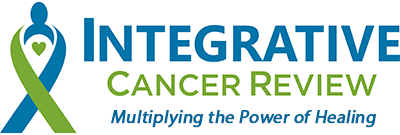
The Importance of the Breath in Healing & Cancer
“I was having a stereotactic biopsy done, and the calming breathing techniques that I had learned in my breast cancer yoga class helped to get me through it.”
— Janet, age 51, breast cancer survivor
Cancer is a stressful diagnosis, and having reliable methods to help to calm and alleviate stress can make all the difference in feeling better. Breath work, or pranayama, is an important part of yoga and an essential practice for calming the mind and body, especially as a part of integrative cancer care. Pranayama is the 4th limb of Patanjali’s eight-limbed yoga path, and it deals with techniques that direct breath and energy, such as breathing techniques, and mudras, which are gestures, done mostly with the hands. Breathing techniques, done as part of a yoga class or on their own can help to increase awareness, slow the breath and reduce stress hormones, all of which can improve quality of life for people affected by cancer.
In addition to bringing in more oxygen, better breath control can improve quality of life by calming the mind and body and bring additional prana, or life force energy, into the mind-body complex. A key to understanding how yogic breathing benefits us is by looking at the autonomic nervous system, which has two branches, the sympathetic system and the parasympathetic system.
The sympathetic nervous system (SNS), also known as the “gas pedal,” controls our fight-or-flight response. The other part of the system is the parasympathetic nervous system (PSNS), also known as the “brake pedal,” or the “rest and digest” response. Breathing slowly and deeply can activate the PSNS, supporting digestion, lowering the heart rate, and supporting repair functions. The PSNS also quiets activity in the fear-response regions of the brain and increases activity in the areas that control calm and creative thought.
Research on Breathing Techniques and Cancer
A study published in the International Journal of Preventative Medicine in 2012, titled Health Impacts of Yoga and Pranayama : A State-of-the-Art Review, stated, “A growing body of research evidence supports the belief that certain yoga techniques may improve physical and mental health through down-regulation of the hypothalamo pituitary adrenal (HPA) axis and the sympathetic nervous system.”
Most of the major studies on cancer survivors that have included breathing techniques have been as part of a full yoga practice, so the effects of just the breathing techniques could not assessed in those studies. While more “dismantling trials” are needed to assess the effects of specific practices, there have been some studies covering just the effects of breathing techniques.
For example, a 2012 study done at the Osher Center for Integrative Medicine and published in the Journal of Alternative and Complementary Medicine, showed that yoga breathing techniques may improve cancer chemotherapy-associated symptoms, including sleep disturbance, anxiety and mental quality of life. One of the keys that the researchers noted in this pilot study was that there was a “dose response”—that is, the more that the subjects practiced, the better that they fared.
Exploring the Breath
Simple breath awareness can be a profound technique for moving toward the relaxation response, a calming of the sympathetic nervous system associated with the production of stress hormones. One of the best postures for exploring the breath is a supported semi-reclining pose, on a bolster with a blanket supporting the head, so there is the ease of the pose and the freedom of the breath.
Before starting any breathing techniques described below, it is helpful to just observe the breath. Explore the following elements of the breath: length, sound, depth, origin, movement and whether the breath moves through the nostrils or mouth. As thoughts and emotions arise, simply observe without judgment and let them go, bringing awareness back to the breath.
The key to safe breathing is to never practice with any type of strain and always work with a qualified practitioner. The techniques for people in cancer treatment should always be very gentle and mindful. Anyone with medical concerns should check with their physicians before undertaking any practices and work with a teacher who is familiar with cancer-related guidelines and precautions. Breathing techniques should be approached slowly and if any dizziness or other discomfort occurs, the practitioner should immediately return to normal breathing.
The following provides a few very simple breathing techniques.
Abdominal Breathing
Many people chest breathe without moving their abdominal area, so it is helpful to learn the abdominal breath as the first breathing technique. It calms the mind and body and brings awareness to the fullness of the breath. Begin in a comfortable position, usually reclining is easiest to start.
- Start with a full inhalation through the nose and a big sigh out of the mouth. Do this three times. This is sometimes known as three conscious exhalations.
- Bring your hands to the abdomen and feel the belly expand as you inhale slowly and feel the abdomen soften and expand.
- Upon exhalation, feel the abdomen fall and contract.
- Continue this breath for a few minutes or as long as is comfortable, without any strain or discomfort.
Dirga Pranayama (aka the Three-Part Breath)
It may be best explore this breath in a reclining pose, such as salumba supta baddha konasana (supported supine bound angle pose), since seated poses require much more muscular effort in order to stay upright.
- Start with a deep breath in and a huge sigh out through the mouth.
- Next, inhale slowly and smoothly through the nose, expanding the abdominal area with the breath.
- Continue inhaling into the mid-ribs, feeling them expand.
- Breathe all the way into the collar bone area.
- Exhale from the collar bone area.
- Exhale from the rib area, but keeping the ribs expanded.
- Exhale from the abdomen, feeling the navel fall toward the spine.
The Practice of Mudra for People Affected by Cancer
Mudra is a simple and gentle practice of gestures which can provide many benefits. This is a practice that can be easily done by most, especially having value to many people who may not be able to do more vigorous practices. In our article Using Mudras in Cancer Recovery, we explore the recommended mudras for people affected by cancer in an interview with Dr. Indu Arora, author of Mudra: The Sacred Secret.
See more on Breathing & Mudra:











